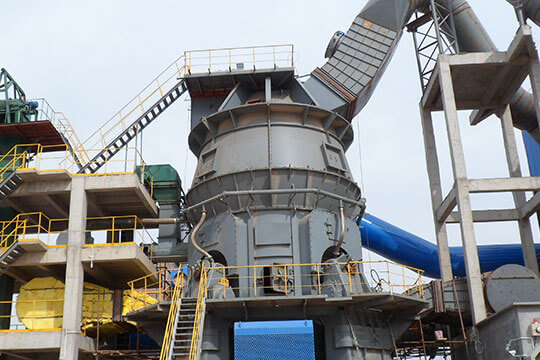Globally, notable efforts are being made to reduce energy consumption by all industries, and the cement industry is not left out. In the cement production process, the major consumer of energy happens in the grinding process. Therefore, anything that could drastically improve the energy efficiency of grinding in a mini cement plant will be a big success.
Even though the grinding efficiency in ball mills is lagging behind other forms of technologies in terms of ease of operation, reliability, ease of maintenance, operational cost, yet the ball mill is still the equipment of choice in cement grinding for most cement producers, either as a standalone unit or integrated with other systems.
Closed Circuit Cement Grinding
It is a two-chambered tube mill where grinding to a smaller, finer particle size is carried out.
In the first chamber
– Size reduction of 25-30 mm to 2.0 -2.5 mm is targeted
– Grinding is done essentially by impact force
– Larger ball sizes (90,80,70,60 and 50 mm) and step type lining are deployed
– Around 9-10 kWh/T is used
– The L/D section is about 1.05
As it leaves the first chamber, the material goes through a diaphragm that demarcates the first chamber from the second chamber. This membrane allows a particle size of 2.0-2.5 mm to pass through to the second chamber.
In the second chamber
– Size reduction from 2.0 – 2.5 mm to the desired fineness is achieved.
– Grinding occurs mainly through attrition force and partially by impact
– The balanced energy 20 – 23 kWh/T is used
– Smaller ball sizes (40, 30, 20, and 10 mm) or celebs (25×25, 22×22 19×19 or even smaller sizes) and wave type linings are used.
It has established that ball mill efficiency is quite low for sizes above 2.5 mm. to make for a more efficient grinding; the second chamber only should be used, as it handles particle sizes that are less than 2.5mm while the first chamber is replaced with a pre-grinder.
Vertical Roller Pre-Grinding Mill
While Roller Press is, of course, the most preferred pre-grinder, the Vertical Roller Pre-grinder Mill (VRPM) is increasingly becoming popular. In VRPM, the material is introduced via the central chute. A centripetal force generated by the rotation of the table.
The clinker, trapped between the roller and the rotating table, is ground by both the compressive forces of the roller as well as the shear force produced by the differential speed of the roller and the table.
The ground material is finally extracted via gravity and use of scrapers. The principle governing grinding here is similar to that in the vertical roller mills. The major difference, however, is the size of the applied pressure on the roller. The pressure is lower in VRPM.
VRPM Modes
Like other rollers, VRPM can be used in several ways:
Pre-grinding mode: Here the material goes through the VRPM just once, and the product is channelled to a ball mill. This is not a commonly used way.
Modified Pre-Grinding Mode: Here, the ball mill feed is a lot finer than the usual feed of the second chamber of the closed circuit ball mill.
While the specific grinding energy of about 5.5.kWh/T is consumed in VRPM, it produces a finer product than what is obtained from the first chamber of the ball mill.
Semi Finish Grinding Mode
This involves a combination of both dynamic and static separators. Here a part of the finished product is gotten from VRPM’s dynamic separator. Coarse materials from the dynamic separator are returned to ball mill as feed. Fly ash may be added at the ball mill discharge or the VRPM discharge depending on its fineness.
Using VRPM
In an upgrade project, the entire ball mill is used to the second chamber and the mill power is only used for fine grinding. Thus, the ball mill, as well as the capacity of the system, is improved. The plate liner type and the grinding media are replaced to match the grinding needs.
The grinding media for the mill is carefully designed as the feed size to the ball mill is a lot finer than that obtained from the second chamber.
When VRPM was initially evolving, the results achieved were quite discouraging. From improper system design, heavy maintenance, use of vibrating screen are some of the issues with the earlier versions.
With the addition of static separator, a more intelligent system design, and some other modifications such as providing speed control for the rotation table, today’s VRPM is now a success story. Sadly, mini cement plants are yet to maximise the potential of the VRPM probably due to the not-too-pleasant initial experience.

